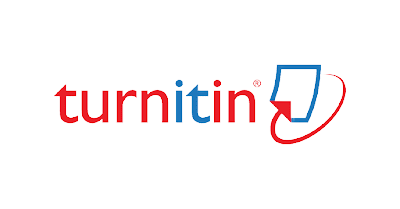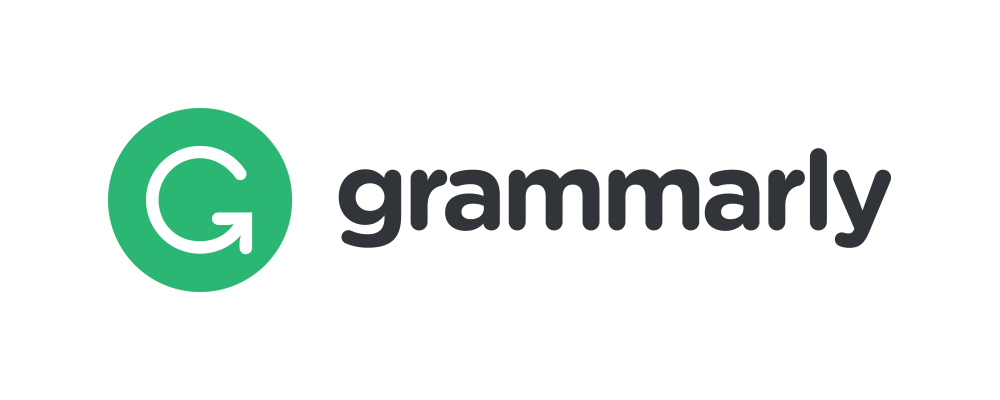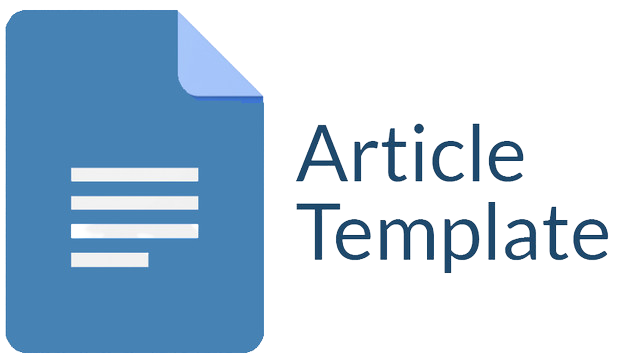DAMPAK MEDIA AUDIOVISUAL TERHADAP KEMAMPUAN MEMBACA AKIBAT KETERLAMBATAN BELAJAR ERA RECOVERY LEARNING SISWA KELAS II SD DI BLORA
Abstract
Penelitian ini dilatarbelakangi oleh kurangnya kemampuan membaca siswa kelas II sekolah dasar di Blora serta kurangnya penggunaan teknologi dalam proses pembelajaran di kelas. Penelitian ini berkaitan dengan penggunaan media audio visual dalam proses pembelajaran di era recovery learning. Fokus penelitian ini adalah untuk mengetahui pengaruh media audio visual dan kemampuan membaca pada proses pembelajaran di era recovery learning. Metode penelitian yang digunakan adalah metode penelitian ex-post facto. Data yang dibutuhkan diperoleh menggunakan instrument penelitian berupa angket. Sasaran pada penelitian ini adalah siswa kelas II SDN Plumbon dan kelas II SDN Punggursugih. Hasil dari penelitian ini menunjukkan adanya pengaruh positif penggunaan media audio visual dan kemampuan membaca terhadap pelaksanaan proses pembelajaran di era recovery learning.
Downloads
References
Adam, N. F., & Mulyani, P. K. (2023). Development Of Interactive Learning Media A rticulate Storyline Of Indonesian Language Learning In Fourth Grade. 8(2), 274–281.
Adi, B. S., Riyanto, S., & Murti, R. C. (2023). Digital Literacy : Perceptions of Primary School Teacher Education Students. 7(1), 27–34.
Alpian, V. S., & Yatri, I. (2022). Analisis Kemampuan Membaca Permulaan dan Kesulitan yang Dihadapi Siswa Sekolah Dasar. Edukatif: Jurnal Ilmu Pendidikan, 4(4), 5573–5581. https://edukatif.org/index.php/edukatif/article/view/3298
Amir, A. (2023). A NALYSIS OF T HE I NFLUENCE OF R EADING S PEED AND R EADING R EFERENCE ON R EADING C OMPREHENSION S KILLS W ITH R EADING S TRATEGY AS M EDIATION V ARIABLES FOR S TUDENTS AT S TATE. 8(1), 113–119.
Arifin, M. C., Damariswara, R., & Imron, I. F. (2023). Pengembangan Media Audio Visual Sparkol Videoscribe Berbasis Scientific Approach Pada Materi Dongeng Pembelajaran Bahasa Indonesia Untuk Siswa Kelas Ii Sdn Lirboyo 1 Tahun Ajaran 2021/2022. EDUSAINTEK: Jurnal Pendidikan, Sains Dan Teknologi, 10(1), 242–258. https://doi.org/10.47668/edusaintek.v10i1.604
Asrul, N., Daulay, I., & Amaniarsih, D. (2020). The effect of audio visual media on students’ reading comprehension. Journal of English Pedagogy, Linguistics, Literature, and Teaching, 8(01), 1–13. https://jurnal.unsur.ac.id/jeopallt
Dewi, N. S., Hartiwi, J., Yani, N. A., & Sutiwi, S. (2023). The Implementation Of Linguistic Intelligence In Teaching Speaking Through Audio-Visual. Journal on Education, 5(4), 11106–11115. https://doi.org/10.31004/joe.v5i4.2035
Fauziah, Z., & Minarti, S. (2023). Edukatif : Jurnal Ilmu Pendidikan Mitigating Learning Loss and Accelerating Learning Recovery through New Learning Strategies in TEFL. 5(5), 2047–2052.
Harianto, E. (2020). Keterampilan Membaca dalam Pembelajaran Bahasa. 9(1), 1–8.
Hasan, M., Milawati, Darodjat, Khairani, H., & Tahrim, T. (2021). Media Pembelajaran. In Tahta Media Group.
Hasanah, A., & Lena, M. S. (2021). EDUKATIF : JURNAL ILMU PENDIDIKAN Analisis Kemampuan Membaca Permulaan dan Kesulitan yang Dihadapi Siswa Sekolah Dasar. 3(5), 3296–3307.
Ismayanti, G. V., Mujtahid, I. M., Vebrianto, R., & Tania, A. (2023). Learning Survey During the Covid-19 Pandemic and Application Media Implications for Elementary School Teachers. 7(3), 481–488.
Mayasari, A., Pujasari, W., Ulfah, U., & Arifudin, O. (2021). Pengaruh Media Visual Pada Materi Pembelajaran Terhadap Motivasi Belajar Peserta Didik. Jurnal Tahsinia, 2(2), 173–179. https://doi.org/10.57171/jt.v2i2.303
Mufidah, I., Nulhakim, L., & Alamsyah, T. P. (2020). Development of Learning Media for Video Audio-Visual Stop Motion Based on Contextual Teaching and Learning in Science Learning Water Cycle Material. Jurnal Ilmiah Sekolah Dasar, 4(3), 449. https://doi.org/10.23887/jisd.v4i3.27357
Penelitian, J. H., Kepustakaan, K., & Pendidikan, B. (2023). Jurnal Kependidikan: 9(2), 719–728.
Puspita, A., & Sari, I. (2023). Analysis Of Language Errors On The Thematic S Emester Final Examination Problems 1 And 2 Elementary School Level. March, 64–70.
Putra, L. D., & S, T. S. (2023). Interactive Learning Multimedia in Supporting Personalized Learning Grade V Primary School. 7(3), 516–525.
Rejeki, N. (2022). Analisis Learning Loss dan Strategi Recovery Pasca Pembelajaran Jarak Jauh. 2(3), 407–422.
Salsabila, U. H., Sofia, M. N., Seviarica, H. P., & Hikmah, M. N. (2020). Urgensi Penggunaan Media Audiovisual Dalam Meningkatkan Motivasi Pembelajaran Daring Di Sekolah Dasar. INSANIA : Jurnal Pemikiran Alternatif Kependidikan, 25(2), 284–304. https://doi.org/10.24090/insania.v25i2.4221
Sappaile, B. I., & Makassar, U. N. (2020). Konsep Penelitian Ex-Post Facto. January.
Saputro, K. A., Sari, C. K., & Winarsi, S. W. (2021). EDUKATIF : JURNAL ILMU PENDIDIKAN Peningkatan Keterampilan Membaca Dengan Menggunakan Media Audio Visual Di Sekolah Dasar. Jurnal Ilmu Pendidikan, 3(5), 1910–1917.
Student, M. T., Kumar, R. R., Omments, R. E. C., Prajapati, A., Blockchain, T.-A., Ml, A. I., Randive, P. S. N., Chaudhari, S., Barde, S., Devices, E., Mittal, S., Schmidt, M. W. M., Id, S. N. A., PREISER, W. F. E., OSTROFF, E., Choudhary, R., Bit-cell, M., In, S. S., Fullfillment, P., … Fellowship, W. (2021). No 主観的健康感を中心とした在宅高齢者における 健康関連指標に関する共分散構造分析Title. Frontiers in Neuroscience, 14(1), 1–13.
Surahman, E., Santaria, R., & Setiawan, E. I. (2020). Tantangan Pembelajaran Daring Di Indonesia Pendahuluan Pembelajaran daring adalah proses pembelajaran yang dilakukan. Journal of Islamic Education Management, 5(2), 94–95.
Vebrianto Susilo, S. (2020). Penggunaan Media Pembelajaran Berbasis Audio Visual Untuk Meningkatkan Hasil Belajar Bahasa Indonesia Di Sekolah Dasar. Jurnal Cakrawala Pendas, 6(2), 113. http://dx.doi.org/10.31949/jcp.v6i1.2100
Widianto, E. (2021). Pemanfaatan Media Pembelajaran Berbasis Teknologi Informasi. Journal of Education and Teaching, 2(2), 213. https://doi.org/10.24014/jete.v2i2.11707
Yarrow, N., Masood, E., Afkar, R., Afkar, R., & Yarrow, N. (2020). Estimates of COVID-19 Impacts on Learning and Earning in Indonesia. Estimates of COVID-19 Impacts on Learning and Earning in Indonesia, August. https://doi.org/10.1596/34378
Yuanta, F. (2017). Pengembangan Media Audio Visual Mata Pelajaran Bahasa Indonesia Untuk Sekolah Dasar. Ibriez : Jurnal Kependidikan Dasar Islam Berbasis Sains, 2(2), 59–70. https://doi.org/10.21154/ibriez.v2i2.36
Zahwa, F. A., & Syafi’i, I. (2022). Pemilihan Pengembangan Media Pembelajaran Berbasis Teknologi Informasi. Equilibrium: Jurnal Penelitian Pendidikan Dan Ekonomi, 19(01), 61–78. https://doi.org/10.25134/equi.v19i01.3963
Zainudin, M., & Fatah, D. A. (2023). Literacy And Numeracy Research Trends For Elementary School Student : A Systematic Literature Review. 8(2), 164–171.
Copyright (c) 2024 Rahmat Dwi Kurniyawan, Sri Sukasih

This work is licensed under a Creative Commons Attribution-ShareAlike 4.0 International License.
Jurnal allows anyone to compose, correct, and do derivative works, even for commercial purposes, as long as they credit for the original work. This license is the freest. It is recommended for maximum distribution and use of licensed material.
The submitted paper is assumed not to contain any proprietary materials that are not protected by patent rights or patent applications; The responsibility for technical content and protection of proprietary materials rests with the authors and their organizations and not the responsibility of journal or its editorial staff. The primary (first/appropriate) author is responsible for ensuring that the article has been viewed and approved by all other authors. The author's responsibility is to obtain all necessary copyright waivers to use any copyrighted material in the manuscript before submission.
Jurnal Pendidikan, Sains dan Teknologi allows the author(s) to hold the copyright without restrictions and allow the author(s) to retain publishing rights without restrictions. Jurnal Pendidikan, Sains dan Teknologi CC-BY-SA or an equivalent license as the optimal license for the publication, distribution, use, and reuse of scholarly work. Jurnal Pendidikan, Sains dan Teknologi allows the author(s) to hold the copyright without restrictions and allow the author(s) to retain publishing rights without restrictions. Jurnal Pendidikan, Sains dan Teknologi CC-BY-SA or an equivalent license as the optimal license for the publication, distribution, use, and reuse of scholarly work.
In developing strategy and setting priorities Jurnal Pendidikan, Sains dan Teknologi recognize that free access is better than priced access, libre access is better than free access, and libre under CC-BY-SA or the equivalent is better than libre under more restrictive open licenses. We should achieve what we can when we can. We should not delay achieving free in order to achieve libre, and we should not stop with free when we can achieve libre.
Jurnal Pendidikan, Sains dan Teknologi is licensed under a Creative Commons Attribution-ShareAlike 4.0 International License.
You are free to:
- Share a copy and redistribute the material in any medium or format
- Adapt a remix, transform, and build upon the material for any purpose, even commercially.
- The licensor cannot revoke these freedoms as long as you follow the license terms.






